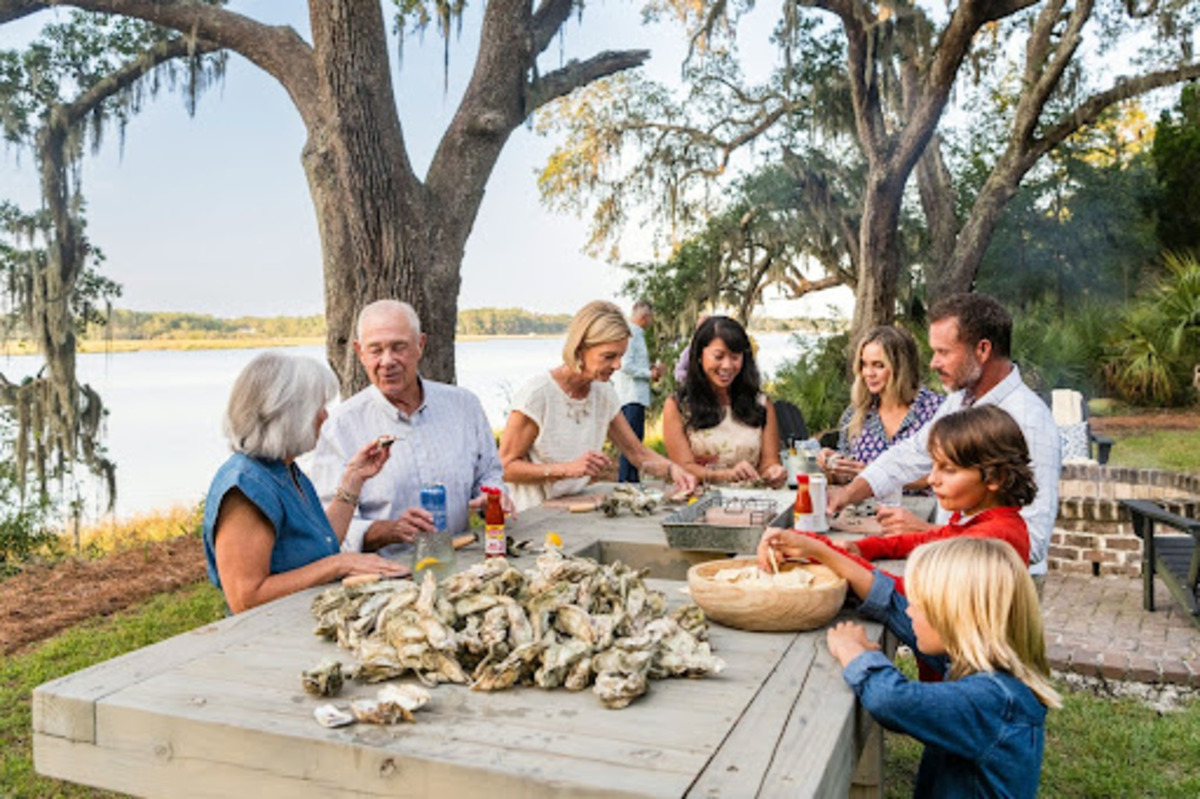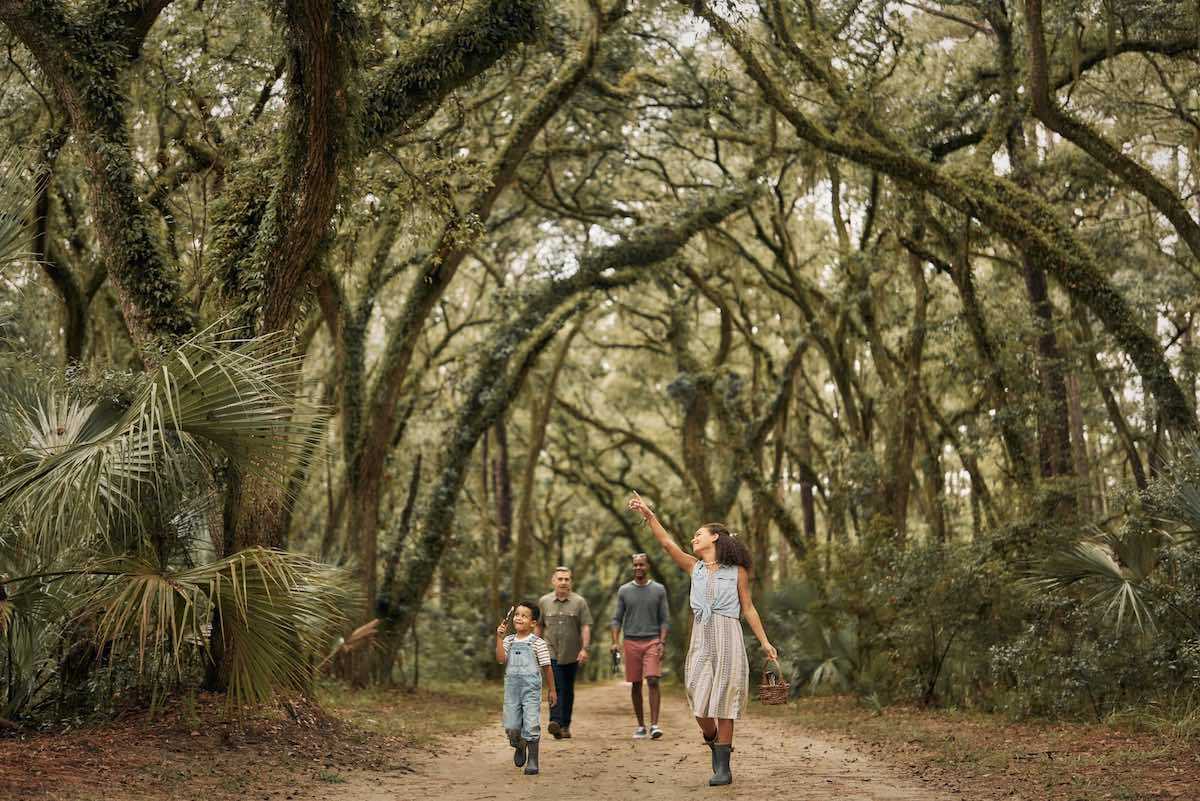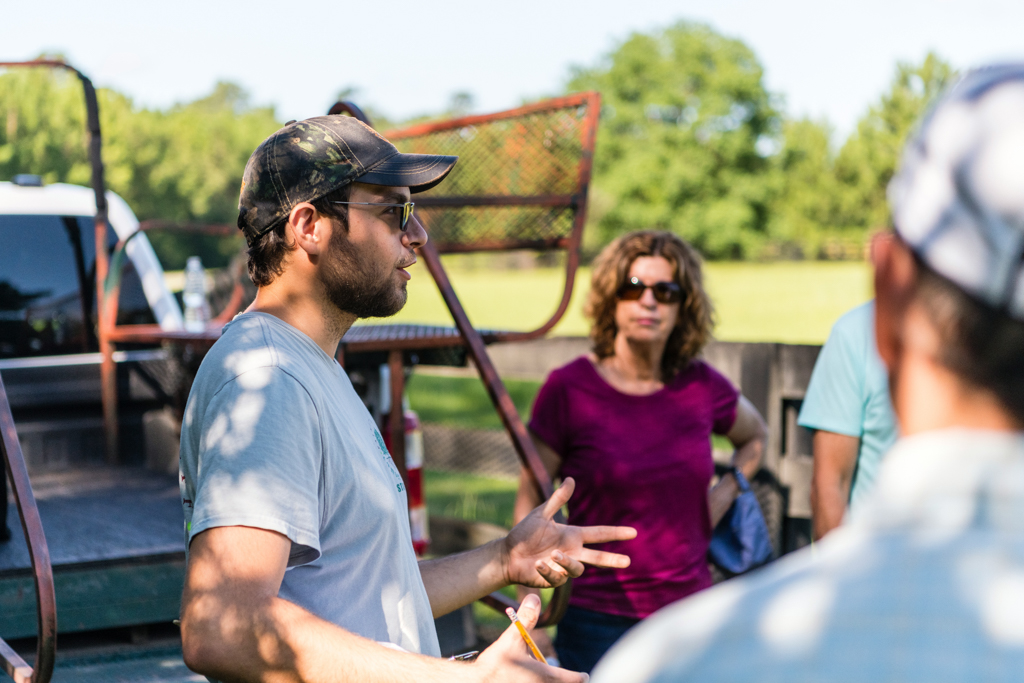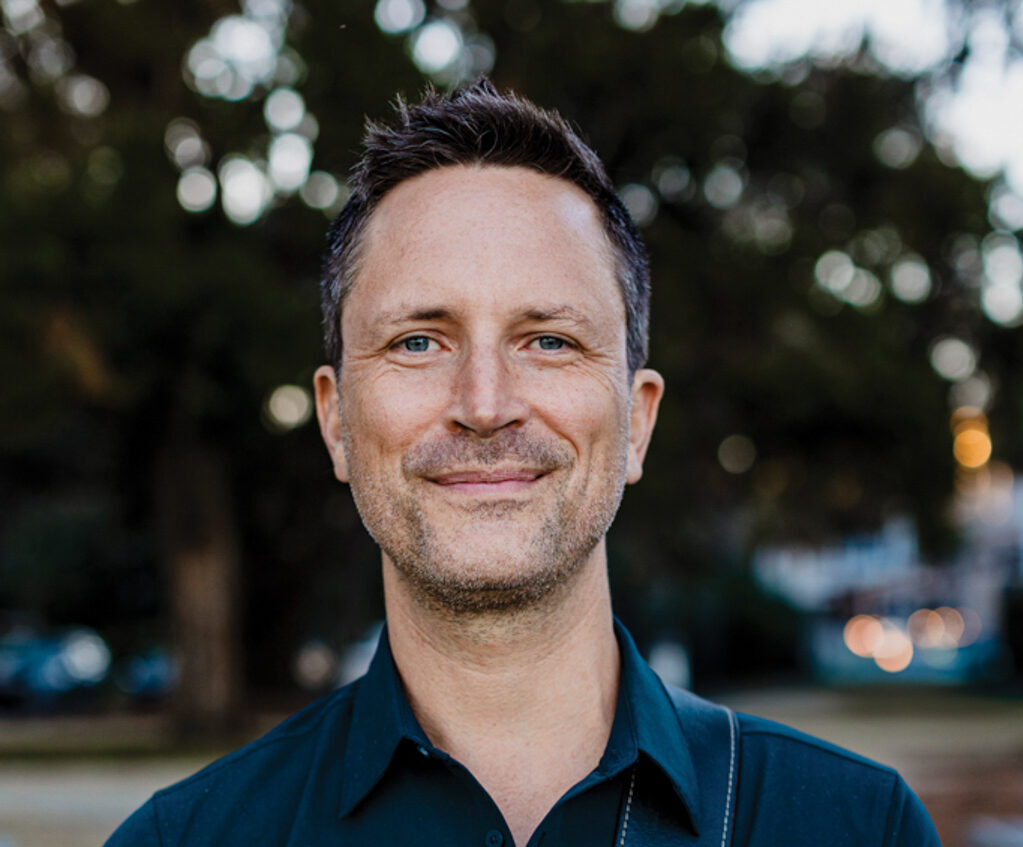Palmetto Bluff Real Estate Company Sales Office
Office Hours
Monday-Friday 9am - 5pm
Saturday 9am - 4pm
Sunday 12 - 4pm
Saturday 9am - 4pm
Sunday 12 - 4pm
It was once as synonymous with Lowcountry culture as Spanish moss and a cornerstone in the history of Palmetto Bluff. And yet, the building material known as tabby seemingly disappeared rapidly from our landscape and our memory.
The mix of lime, water, sand, oyster shells, and ash went from a signature design feature of Lowcountry settlers in the 1700s and 1800s to an architectural mystery. Thanks to the efforts of archeological sleuths, we are only now beginning to realize the crucial role this material played in the evolution of Beaufort County communities.
“It is amazing how a material can go from plentiful just 250 years ago to eluding even the area’s greatest historical scholars as recent as 40 years ago,” said architect Colin Brooker, one of the “detectives” responsible for literally unearthing the origin story behind tabby—its ingenious anatomy and engineering as well as its inevitable limitations.
Brooker has become one of the world’s leading experts on tabby design and history over the past three decades, but this career specialty began out of necessity.
He and his wife, fellow architect Jane, took on the rescue and restoration of Beaufort’s storied Elizabeth Barnwell Gough House in 1976 that Brooker and his team soon found to be full of tabby.
“We discovered this building material that I knew very little about and I quickly realized very few others knew about tabby,” Brooker said. “If we were going to properly restore the magnificence of this house, I was going to need to know all I could uncover. That’s what set me down this maddening path of discovery I have been on for the past three-plus decades. And what I have found is that the creation of tabby is brilliant, really. It’s as simple as making the most of what those early settlers had available to them and turning it into a stunning design element.”
Brooker and others discovered that tabby was a recipe concocted out of convenience and abundance around the pre-Civil War Lowcountry in the early 1700s. All the materials were found in Beaufort and the coastal region. The lime was made by burning down oyster shells readily available thanks to acres upon acres of middens, piles of shells from Native American kitchen waste.
But who had the genius idea of combining these materials? Variations of the rammed-earth construction technique date back to Roman times, and tabby structures have been traced as far back as the tenth century and later to Spanish military installations in the late 1500s and to the Gullah culture of West Africa that migrated to the South Carolina coast.
Historians speculate that the science and specificity of Lowcountry tabby was discovered when the British stormed St. Augustine and stole it from the Spanish at the turn of the 18th century.
Tabby quickly became a go-to material and technique for area builders, as settlers discovered the mix to be more durable than wood, which deteriorated much quicker in the humid climate. Soon, tabby went from a fresh concept to a cultural mainstay and sociological status symbol of Charleston, Beaufort, and Bluffton homes of the 1700s. Researchers including Palmetto Bluff archeologist Dr. Mary Socci have documented the rise and heyday of tabby at the Bluff, including William McKimmey’s Octagon House, one of the newborn United States’ first architectural marvels built in 1796.


Whereas stone and brick were rare and expensive and the work of highly trained masons, making tabby was an arduous but simple enterprise. Enslaved people quickly picked up the process of mixing tabby and building tabby structures. Gathering materials took time, and while the recipe was difficult to perfect, the mixture was made quickly and in mass. Builders found it easy to work with and found multiple uses in the construction process—molds were created for bricks, walls, columns, arches, floors, and even roofs.
“The early molds were two feet tall, so if you wanted height, that became labor intensive,” Brooker said. “And the floors became rough and wore quickly, so they needed replacing every 10 years. We’ve seen eight, nine layers of flooring in some ruins. To replace it, they just poured on top of the old layer.”
The hallmarks that made tabby so advantageous also led to its near extinction. Newly freed people dispersed around the Southeast after the Civil War, and as the once-abundant oyster shell middens were depleted, a newly manufactured material, Portland cement, became the go-to construction material by the 1870s.
That material was later added to the tabby recipe, creating a stronger, more moisture-resistant mixture that led to a tabby construction revival from the late 1800s through 1930. But unlike the earlier styles named after legends such as Oglethorpe and Spalding, the later-period homes so prevalent along Georgia’s Golden Isles, Sea Islands, and the Lowcountry coast were often lacking in long-term durability, as Brooker and others have discovered.
“We found they were using a premade lime mix, often shipped in, and many of the ruins we’ve discovered used ocean shells. The builders did not wash the salt away from these shells, and that made the tabby a far less durable disaster waiting to happen,” said Brooker, whose latest tabby archeological endeavors are being detailed in his book, The Shell Builders, from the University of South Carolina Press.
After 1930, tabby went from a cultural staple to a relic.
“It wasn’t any one thing that made tabby construction go away,” Brooker said. “It was just very labor intensive to do right and there was an exact science behind the recipe, and so newer technologies and mass-production methods became the norm. It has been stunning to see how little was historically documented about tabby, but that has made the hunt for knowledge and documenting that pursuit all the more of a preoccupation for folks like myself.”
Today, Beaufort County is home to the most discovered tabby ruins in the world. Here at Palmetto Bluff, the forefather work of those such as McKimmey is honored throughout, especially in the homes of Moreland Village—where builders were able to replicate the original tabby effect for foundation walls and accent features such as fireplaces, porches, and bowling alley cladding.


As for detectives such as Socci and Brooker, the mystery continues to be pieced together, one discovery at a time. Brooker said his phone is ringing constantly with new discoveries, both statewide in coastal communities in Georgia, Florida, Alabama, and Texas to farther-flung locales such as the Bahamas and Morocco.
“It is a beautiful and mysterious material,” Brooker said. “In my profession, it is told that architects don’t retire, they just die. The work is never done, the fascination and that thirst for discovery never subsides, and truth be told, I’m no different when it comes to tabby.”
The Enduring Story of Tabby originally appeared in the Fall/Winter 2020 edition of the bluff.
%GALLERY%

Best Things to Eat in South Carolina’s Lowcountry When it comes to Southern cuisine, no place captures the heart (and appetite) quite like the South Carolina Lowcountry. Rooted in history and layered with coastal influence, this region serves up a culinary id...

Marissa’s Journey to Palmetto Bluff At Palmetto Bluff, hospitality goes beyond service; it’s a way of life. For Members and visitors alike, there’s a quiet charm to the place that draws you in, makes you feel at ease, and leaves a lasting impression. Few peop...

Top 7 Palmetto Bluff Nature Trails Do you ever get the feeling of wanting to escape and wander into a serene paradise? The nature trails at Palmetto Bluff afford opportunities to roam and admire the vastness of the Bluff’s 20,000 acres. Throughout the communi...

Palmetto Bluff’s Moreland Village feels a world away from the more traditional architecture of the iconi...

We are thrilled to introduce the inaugural winners of the Inspiring the Arts Scholarship—three extraordinary young women pursuing their artistic dreams through higher education! Katherine Donahue has been named our first official scholarship recipient, with Em...

From handmade jewelry to performance wear, the latest arrivals at Palmetto Bluff’s retail spots capture the season in true Lowcountry style. This summer, the Bluff’s shops are full of fresh finds, carefully chosen by our trusted retailers—including FLOW Galler...

Citizen Science is Thriving at Palmetto BluffDid you know that residents of Palmetto Bluff are playing a vital role in national and global conservation efforts—all from their backyard?Through the Palmetto Bluff Conservancy’s growing Citizen Science programs, c...

In October 2024, Grammy Award-winning musician Clay Ross visited Palmetto Bluff as part of The Arts Initiative's Artist in Residence Program. Through storytelling and song, he explores identity, heritage, and the universal language of sound. By Barry Kaufman ...

Palmetto Bluff Club Executive Chef Beth Cosgrove and Director of Culinary, Chef Rhy Waddington, Cook Up Four Peachy Recipes for a Summer in the South. Is there anything more iconic than a southern peach? A symbol of summer and Southern heritage, the peach car...

Following the tides and angling for redfish in Lowcountry creeks and estuaries with Captains Brian Vaughn and Will Stephens Story by Sandy Lang It is a sunny morning in October and the water is calm and glassy. The silence is punctuated by a gush of breath f...
Learn about the Palmetto Bluff Conservancy and how we keep the vision of our land in place.
On land or water, there is an ever-evolving variety of activities.
We do not attempt to independently verify the currency, completeness, accuracy or authenticity of the data contained herein. All area measurements and calculations are approximate and should be independently verified. Data may be subject to transcription and transmission errors. Accordingly, the data is provided on an “as is” “as available” basis only and may not reflect all real estate activity in the market”. © [2023] REsides, Inc. All rights reserved. Certain information contained herein is derived from information, which is the licensed property of, and copyrighted by, REsides, Inc.